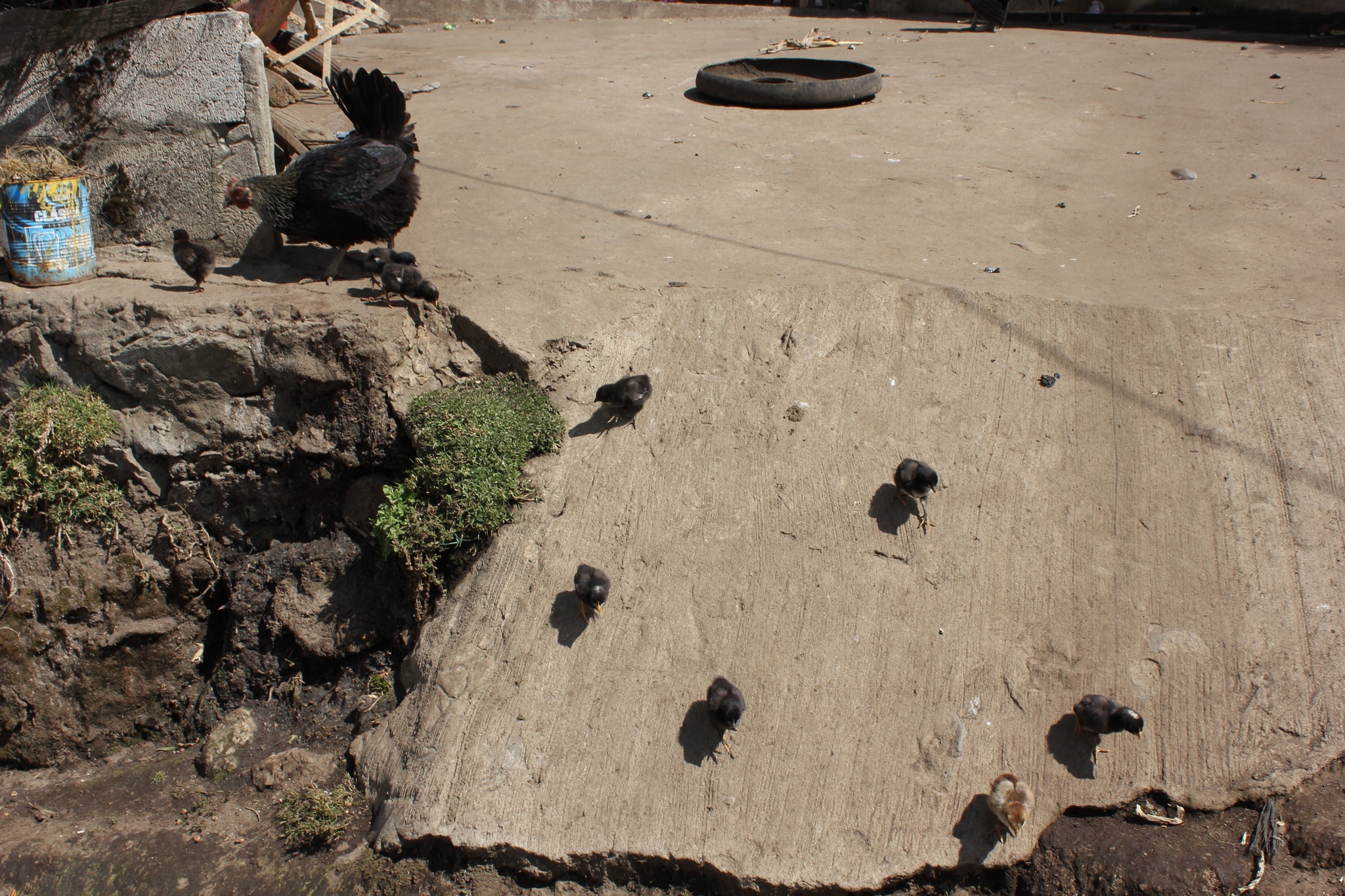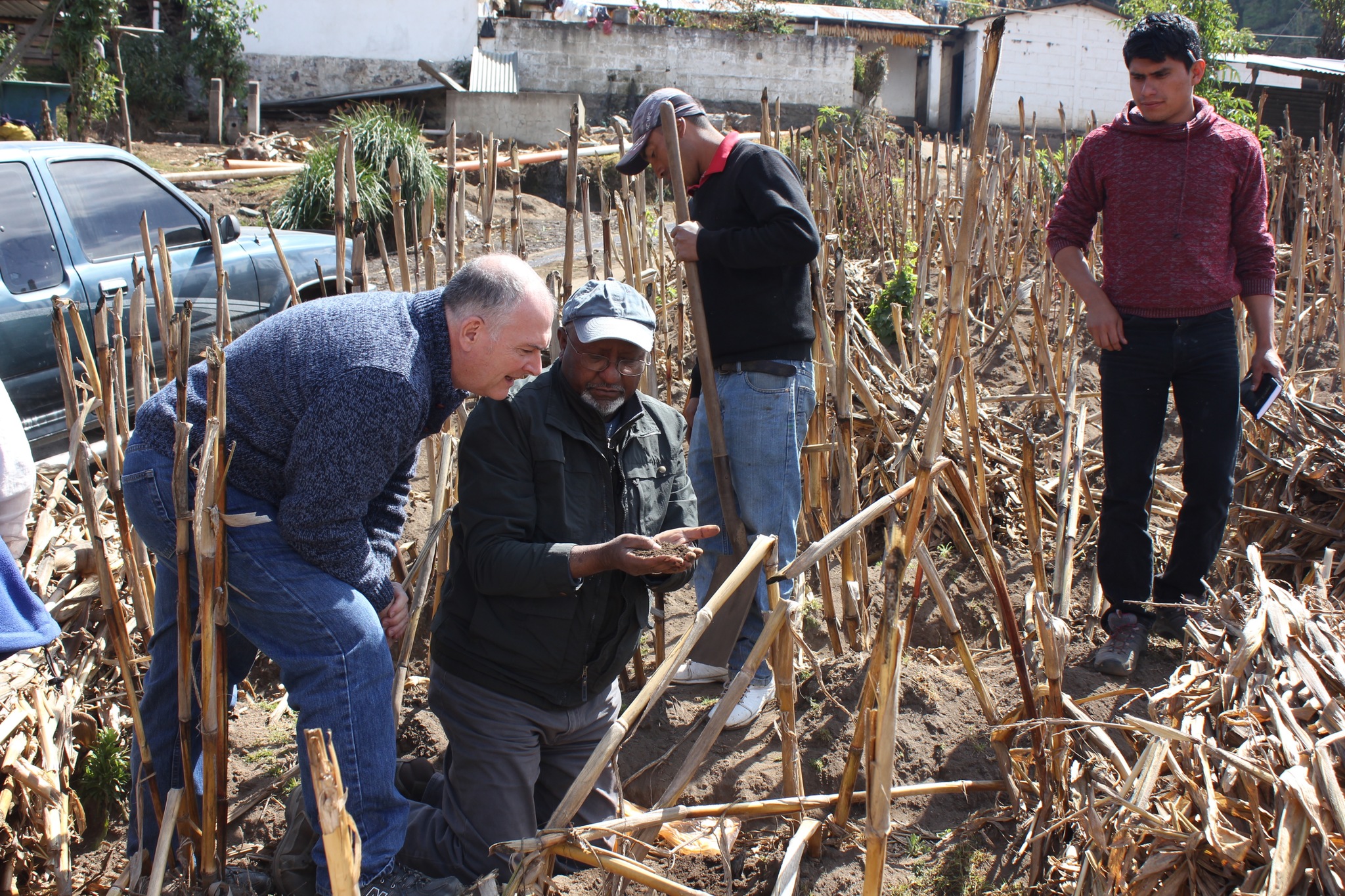
Connecting ‘fuzzy cognitive mapping’ with soil health practices helps researchers identify sustainable nematode solutions
In Guatemala, potato farmers are losing their spuds to a microscopic menace – potato cyst nematodes.
In the Western Highlands, nematodes have been blamed for cutting crop yields in half over the past 20 years. Small-scale farmers are responsible for 75 percent of Guatemala’s potato production, digging ditches in steep cliffs to plant the tubers by hand. They save smaller potatoes for their family and sell larger, more valuable potatoes at markets.
The nematodes tunnel into the roots of potato plants to feed, where they grow into fat, circular-shaped cysts. Their presence reduces the quantity and size of potatoes, robbing farmers of income and nutrition. Pesticides to eradicate nematodes are neither readily available nor culturally sanctioned in the region.
Healthy soils are inhospitable to nematodes
Since 2016, Brent Sipes and Catherine Chan of the University of Hawai’i at Mānoa, Haddish Melakeberhan of Michigan State University and Amiclar Sanchez-Perez and Anibal Sacbajá of the Universidad de San Carlos de Guatemala have been working with smallholder farmers near Huehuetenango and San Marcos to rid crops of the tack-sized pest.
The research team, whose work is supported by the Horticulture Innovation Lab, are employing agricultural techniques to improve the health of soil, making it inhospitable to the nematodes, which thrive in degraded soils. Healthy soils create a complex soil food chain where the nematodes are suppressed and beneficial organisms can prosper.
“The area is so remote,” Sipes said. “Not many professional experts or even private companies have gone to the region to sell inputs or fertilizer. The impact that we had in the region is that now the farmers know that there are people who are interested in their plight and who want to help them.”

Mapping how farmers understand pest and soil problems
The team used a research method called Fuzzy Cognitive Mapping to gather data about how farmers perceive the nematode problem. Research has shown that promoting best intervention practices without understanding their socio-cultural relationships reduces adoption rates of new technologies.
“Cognitive mapping helps us understand how the community is thinking, to tailor our workshops and teaching so that we can target misconceptions and linkages that they do not see,” Sipes said.
The scientists gathered data through face-to-face, semi-structured interviews with farmers who were part of Cooperativa Agrícola Paquixeña, after a free informational session on potato production. Respondents were first asked if they were aware of the potato cyst nematode infestation and if they answered yes, asked if they considered the infestation to have a positive or negative impact on their crops. They were then asked to rank the magnitude of the potato cyst nematode’s influence on their crops as low, medium or high. Other questions delved into their conception of the connection between the presence of potato cyst nematodes, soil health and crop yield.
One finding was that that many farmers were distrustful of certified potato seeds, which they blamed for attracting nematodes to their crops.
“If we go in and say that they should use certified potatoes and they have anecdotal evidence that suggests certified potatoes are to blame for the problem, they might be polite to us, but likely won’t trust our interventions,” Sipes said.

Recommendations tailored to farmer understanding offer longer term solutions
Through the mapping, the team identified two agricultural interventions to recommend to farmers. They encouraged the farmers to incorporate composted chicken litter into their soil and to apply the biological pesticides Trichoderma and Purpureocillium lilacinum. These biopesticide treatments are fungi that attack nematode eggs and are sold by Popoyán, a Guatemalan company.
In one community where farmers had shared that they believed chicken litter attracts nematodes, the researchers instead encouraged them to mix composted horse litter into their soil.
From the cognitive mapping, researchers also learned that farmers relied on cooperatives to learn new farming practices. Thus the team is sharing their pest management techniques with two prominent potato cooperatives, so these strategies can be shared more widely and used long after the research project has ended.

Sipes reflected that soil in the region is so depleted that it may take years to restore its health.
“In the long term, I hope that we have an impact in teaching farmers about the incorporation of more organic matter and soil health,” he said. “I hope that by knowing that they have a nematode problem, they make better choices.”
Next the researchers will survey farmers for a frontier analysis which will determine what amount of agricultural inputs yield the most outputs relative to their cost. They will share the findings with farmers so that they can purchase inputs like composted chicken litter wisely, knowing that they will get the maximum return for their agricultural investment.
More information:
- Project information: Managing nematodes and soil health in Guatemala
- Fact sheet version of this success story: Targeting soil health to reduce nematodes on Guatemalan farms
- 2-minute video: Nematode management and soil health for potato farmers
